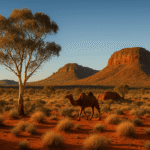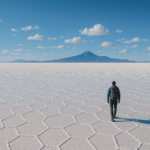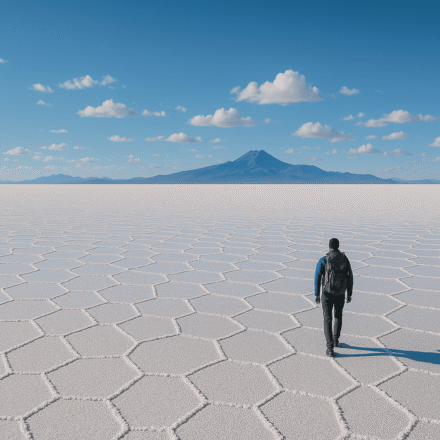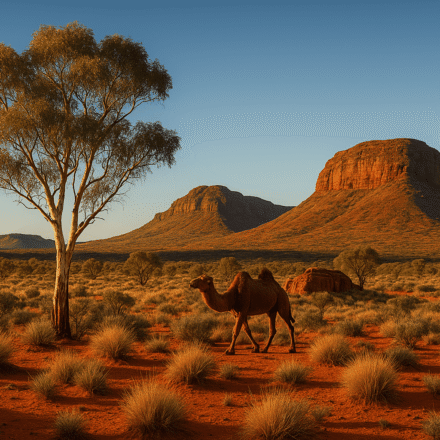Experience the Epic Annapurna Circuit Trek in Nepal: Complete Guide for 2025
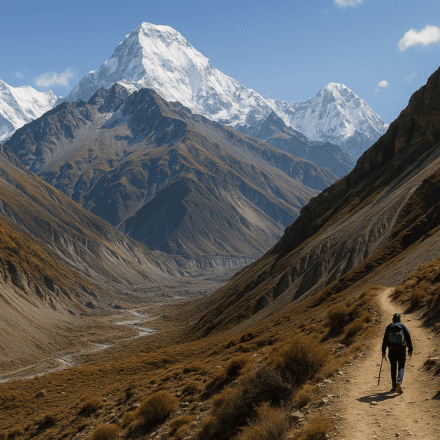
The Annapurna Circuit Trek stands as one of the world’s greatest hiking adventures, offering an incredible journey through Nepal’s diverse landscapes, rich cultures, and breathtaking mountain views.
Table Of Content
- What Makes the Annapurna Circuit Trek So Special
- The Geographic Marvel of the Circuit
- Incredible Diversity of Landscapes
- Cultural Richness Along the Trail
- Planning Your Annapurna Circuit Trek: When to Go and What to Expect
- Best Seasons for the Annapurna Circuit Trek
- Physical Demands and Difficulty Level
- Annapurna Circuit Trek Costs: Budgeting Your Himalayan Adventure
- Trek Package Options and Price Comparison
- Daily Cost Breakdown for Independent Trekkers
- Cultural Treasures Along the Annapurna Circuit
- Diverse Communities and Their Traditions
- Sacred Sites and Monasteries Not to Miss
- Cultural Festivals Worth Timing Your Trek For
- Navigating the Trek: Routes, Itineraries, and Logistics
- Classic Routes and Modern Variations
- Required Permits and Documentation
- Transportation To and From the Trek
- Essential Preparations for Your Annapurna Circuit Journey
- Physical Conditioning and Health Preparations
- Packing Essentials for Different Seasons
- Accommodation and Food Along the Trail
- Frequently Asked Questions About the Annapurna Circuit Trek
- How difficult is the Annapurna Circuit trek?
- What permits do I need for the Annapurna Circuit?
- Do I need a guide for the Annapurna Circuit?
- What is the best time to trek the Annapurna Circuit?
- How long does it take to complete the Annapurna Circuit?
- Has road construction affected the Annapurna Circuit?
- Your Annapurna Circuit Adventure Awaits
From subtropical forests to high alpine passes, this iconic trek delivers experiences that stay with trekkers forever. Having completed the circuit twice myself, I can honestly say there’s nothing quite like watching the sunrise over the Annapurna range from Thorong La Pass!
What Makes the Annapurna Circuit Trek So Special
The Annapurna Circuit is famous worldwide for good reasons. Let me share what makes this trek truly stand out from others in the Himalayas.
The Geographic Marvel of the Circuit
The Annapurna Circuit deserves its reputation as one of the best long-distance treks globally. Here’s why:
- Complete mountain loop: Circles the entire Annapurna Massif (160-230 km depending on route)
- Two river valleys: Traverses both the Marshyangdi and Kali Gandaki valleys
- High pass challenge: Crosses the mighty Thorong La Pass at 5,416 meters (17,769 feet)
- Mountain panoramas: Offers close-up views of peaks including Annapurna I-IV, Dhaulagiri, Machhapuchhre, Manaslu, Gangapurna, and Tilicho Peak
Most trekkers follow an anti-clockwise direction to safely manage the Thorong La Pass crossing, which approaches the edge of the Tibetan plateau.
Incredible Diversity of Landscapes
What truly sets the Annapurna Circuit apart is its remarkable diversity. One morning, you might wake up among banana trees, and a few days later, you’ll find yourself in an arctic environment!
- Dramatic elevation change: Starts at 600 meters and reaches 5,416 meters at Thorong La Pass
- Multiple climate zones: Passes through tropical lowlands, mid-hills, alpine regions, and high-altitude desert
- Varied ecosystems: Showcases subtropical forests, pine forests, arid plateaus, and rocky moonscapes
During my first trek, I remember being amazed at how quickly the environment changed. One day I was sweating in a t-shirt among rice paddies; three days later, I needed my down jacket as we approached the high-altitude sections near Manang.
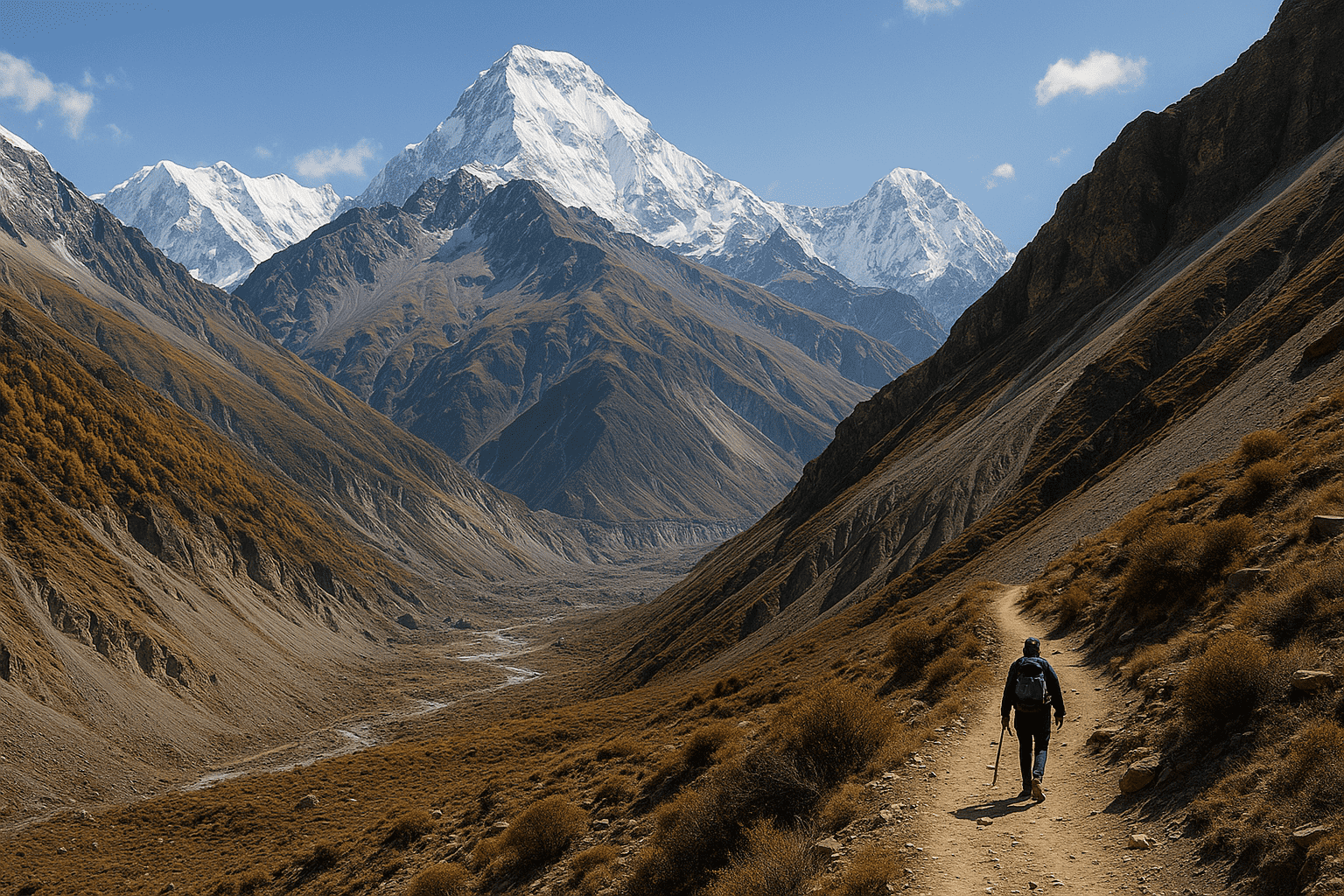
Cultural Richness Along the Trail
The Annapurna Circuit isn’t just about natural beauty-it’s a cultural journey through time:
- Diverse ethnic groups: Pass through regions inhabited by Gurung, Thakali, and Tibetan communities
- Religious transitions: Experience Hindu villages in lower elevations shifting to Buddhist influences in higher regions
- Authentic village life: Witness traditional farming, crafts, and daily routines largely unchanged for generations
Planning Your Annapurna Circuit Trek: When to Go and What to Expect
Timing is everything for a successful Annapurna Circuit experience. Let me help you choose the best season based on my experiences and the latest information for 2025.
Best Seasons for the Annapurna Circuit Trek
The trek is possible year-round, but some seasons offer better experiences than others:
Spring (March to May)
- Clear mountain views, especially in early morning
- Rhododendron forests bloom with vibrant red and pink flowers
- Moderate temperatures: comfortable days, cool nights
- Increasingly popular in 2025 due to stable weather patterns
Autumn (September to November)
- Peak trekking season with the clearest skies
- Stable weather after monsoon season ends
- Crisp mountain views with excellent visibility
- More crowded than other seasons
Winter (December to February)
- Fewer trekkers on the trail
- Very cold at higher elevations
- Snow possible on Thorong La Pass (may be closed occasionally)
- Clear, dry days but extremely cold nights
Monsoon (June to August)
- Rain, mud, and leeches in lower elevations
- Potential landslides and trail damage
- Limited visibility of mountain peaks
- Not recommended unless you’re an experienced trekker
I’ve trekked in both spring and autumn. While autumn offered clearer views overall, I found spring to be less crowded and loved seeing the rhododendron forests in full bloom.
Physical Demands and Difficulty Level
The Annapurna Circuit presents significant challenges that require proper preparation:
- Daily hiking: Average 6-7 hours walking per day
- Elevation gain: Gradual ascent with some challenging days
- Altitude considerations: Time needed for proper acclimatization
- Length factor: Most treks last 10-21 days, requiring good stamina
Key challenges include:
- The steep ascent to Thorong La Pass (5,416m)
- Long distance days (sometimes 15-16 km)
- Unpredictable weather changes
- Potential altitude sickness above 3,000m
Annapurna Circuit Trek Costs: Budgeting Your Himalayan Adventure
Understanding costs helps you plan better. Here’s what to expect for your 2025 trek.
Trek Package Options and Price Comparison
The Annapurna Circuit offers options for every budget. Here’s a breakdown of what you can expect to pay in 2025:
| Package Type | Price Range | What’s Included | Best For |
|---|---|---|---|
| Budget | $699-$1,199 | Basic permits, teahouse accommodation, meals, guide, local transport | Independent trekkers, budget travelers |
| Standard | $999-$1,999 | Everything in budget package plus better accommodation, more meal options, private transport | Most trekkers seeking comfort without luxury |
| Luxury | $2,499-$3,999 | Premium services, top accommodation, gourmet meals, senior guides, personal porter, high-end equipment | Trekkers wanting maximum comfort |
Popular budget package options for 2025:
- 12-day Annapurna Circuit: $797-$1,097
- 10-day shortened itinerary: $635-$875
- 8-day bespoke trek: $695-$995
Standard package options:
- 20-day classic circuit: $1,125-$1,395
- 15-day standard trek: $1,050-$1,195
- 22-day circuit with Annapurna Base Camp: $1,275-$1,650
Daily Cost Breakdown for Independent Trekkers
If you’re planning an independent trek rather than a package, here’s what daily costs look like in 2025:
- Accommodation: $3-$10 per night in teahouses
- Meals: $20-$30 per day (higher in remote areas)
- Guide: $20-$25 per day (recommended)
- Porter: $20-$25 per day (optional)
- Permits: ACAP and TIMS (one-time fees)
Additional expenses to consider:
- Hot showers: $2-$5 (free in some lower-elevation teahouses)
- Wi-Fi: $2-$5 per day (where available)
- Battery charging: $2-$5 per device
- Snacks and drinks: $5-$10 per day
- Tips for guides and porters: $50-$100 total (depending on trek length)
During my last trek, I spent roughly $25-$30 daily on food and accommodation, plus about $150 for permits. Prices rise with elevation, so budget more for days spent in higher villages like Manang and near Thorong La Pass.
Cultural Treasures Along the Annapurna Circuit
The cultural experiences along the Annapurna Circuit are as memorable as the mountain views.
Diverse Communities and Their Traditions
The Annapurna region is home to several ethnic groups, each with unique traditions:
- Gurung communities: Predominant in lower elevations, known for farming terraces and rich cultural traditions
- Thakali people: Famous for their entrepreneurial skills and distinctive cuisine
- Tibetan-influenced villages: Found in higher elevations like Manang and Mustang, with strong Buddhist practices
In Manang, I stayed with a local family who shared stories about their winter migration to Kathmandu when heavy snows close the high passes. These personal connections make the trek special beyond the scenery.
Sacred Sites and Monasteries Not to Miss
The circuit features important religious sites that offer cultural insights:
- Braga Monastery: One of the oldest Tibetan monasteries in the region, perched on a hill near Manang with ancient statues and manuscripts
- Muktinath Temple: A sacred site for both Hindus and Buddhists with 108 water spouts and natural flame
- Kagbeni Monastery: A Tibetan-style monastery serving as gateway to Upper Mustang
- Prayer wheels and mani walls: Sacred structures found throughout the trek
Personal tip: Visit Braga Monastery early in the morning to catch the monks’ morning prayers-it’s a moving experience that few trekkers get to witness.
Cultural Festivals Worth Timing Your Trek For
If possible, plan your trek during these festivals for an enhanced cultural experience:
- Dashain and Tihar: Nepal’s biggest Hindu festivals (October/November), celebrated with rituals, lights, and feasting
- Tibetan New Year (Losar): Celebrated in higher regions with prayers, incense burning, and community gatherings
- Local harvest festivals: Smaller celebrations specific to individual villages
During Tihar, I witnessed families decorating their homes with marigolds and butter lamps, creating a magical atmosphere along the trail.
Navigating the Trek: Routes, Itineraries, and Logistics
Planning your route is crucial for a successful Annapurna Circuit experience.
Classic Routes and Modern Variations
The traditional Annapurna Circuit has evolved with new roads and alternate trails:
Traditional full circuit (14-18 days):
- Starts in Besisahar/Bhulbhule
- Follows Marshyangdi Valley to Manang
- Crosses Thorong La Pass to Muktinath
- Descends Kali Gandaki Valley
- Ends in Nayapul/Pokhara
Shortened variations (10-12 days):
- Start further up the valley by jeep (Chame or Dharapani)
- Exit early via Jomsom (flight to Pokhara)
- Focus on the most spectacular sections
Extended options (20+ days):
- Add Tilicho Lake side trip (world’s highest altitude lake)
- Combine with Poon Hill trek
- Include Annapurna Base Camp
For those concerned about road sections, look for the New Annapurna Trekking Trails (NATT) marked with blue/white or red/white signs, which offer more peaceful alternatives to the roads.
Required Permits and Documentation
Two permits are mandatory for the Annapurna Circuit:
- Annapurna Conservation Area Permit (ACAP)
- Supports conservation efforts in the region
- Obtainable in Kathmandu or Pokhara
- Requires passport, photos, and fee payment
- Trekker’s Information Management System (TIMS) Card
- Tracks trekkers for safety purposes
- Available at Nepal Tourism Board offices or through trekking agencies
- Requires passport, photos, and fee payment
Always check the latest permit requirements before your trek, as regulations can change.
Transportation To and From the Trek
Getting to and from the Annapurna Circuit has become easier with improved transportation options:
Starting points:
- From Kathmandu to Besisahar: 6-8 hour bus/jeep ride
- From Besisahar to trail start: Local jeep or begin walking
Exit options:
- Jomsom to Pokhara: 20-minute flight (weather dependent)
- Jomsom to Pokhara: 8-10 hour bus/jeep ride
- Nayapul to Pokhara: 1.5-hour taxi/bus ride
I recommend booking your exit flight from Jomsom in advance during peak season, as seats fill quickly and weather cancellations are common.
Essential Preparations for Your Annapurna Circuit Journey
Proper preparation makes the difference between an enjoyable adventure and a difficult ordeal.
Physical Conditioning and Health Preparations
Start preparing your body at least 2-3 months before your trek:
- Cardio training: Regular hiking, stair climbing, or treadmill with incline
- Strength exercises: Focus on legs and core for stability on rough terrain
- Practice hikes: Complete several 6-8 hour hikes with a loaded backpack
- Altitude preparation: Research altitude sickness prevention and symptoms
Health preparations:
- Consult your doctor about altitude medication (Diamox)
- Get travel insurance that covers high-altitude trekking and evacuation
- Pack a comprehensive first aid kit
- Bring water purification tablets or a filter
Packing Essentials for Different Seasons
Your packing list will vary by season, but these items are essential year-round:
- Layering clothing system: Base layers, insulating layers, and waterproof outer shell
- Quality hiking boots: Well broken-in before the trek
- Sleeping bag: Rated for cold temperatures (even in teahouses)
- Sun protection: Hat, sunglasses, and high-SPF sunscreen
- Trekking poles: For stability on steep sections
For spring and autumn:
- Mid-weight insulation
- Light and heavy gloves
- Sun protection
For winter:
- Heavy down jacket
- Warm sleeping bag (-10°C or colder rating)
- Insulated boots
- Heavy gloves and warm hat
On my winter trek, having battery packs for my phone was crucial, as cold temperatures drain batteries quickly at high altitudes.
Accommodation and Food Along the Trail
Understanding teahouse accommodation helps set realistic expectations:
- Basic rooms: Twin beds with simple mattresses
- Shared bathrooms: Common in most teahouses
- Heating: Limited to common dining areas, not bedrooms
- Hot water: Available at additional cost in most places
Food options:
- Dal Bhat: Traditional Nepali rice and lentil dish (unlimited refills!)
- Momos: Tibetan dumplings
- Thukpa: Noodle soup
- Western options: Pasta, pizza, and pancakes (more expensive)
The food in Manang and Marpha is particularly good-try the apple pie in Marpha, famous throughout the trekking community!
Frequently Asked Questions About the Annapurna Circuit Trek
How difficult is the Annapurna Circuit trek?
The Annapurna Circuit is moderately difficult. The main challenges are the 5,416m high Thorong La Pass crossing and the length of the trek (10-21 days). Average daily walking time is 6-7 hours. Good basic fitness is needed, but technical climbing skills aren’t required. Proper acclimatization is essential to prevent altitude sickness.
What permits do I need for the Annapurna Circuit?
You need two permits: the Annapurna Conservation Area Permit (ACAP) and the Trekker’s Information Management System (TIMS) card. Both can be obtained in Kathmandu or Pokhara with your passport, photos, and permit fees. These permits support conservation efforts and help track trekkers for safety.
Do I need a guide for the Annapurna Circuit?
A guide isn’t legally required, but is highly recommended, especially if you’re a first-time trekker in Nepal. Guides help with navigation, communication with locals, cultural insights, and emergency situations. They cost $20-25 per day. Porters (also $20-25 daily) can carry your heavy gear, making the trek more enjoyable.
What is the best time to trek the Annapurna Circuit?
The best times are spring (March-May) and autumn (September-November). Spring offers blooming rhododendrons and moderate temperatures. Autumn provides the clearest mountain views and stable weather. Winter (December-February) is very cold but quiet. The monsoon season (June-August) brings rain, mud, and potential landslides, making it the least favorable time.
How long does it take to complete the Annapurna Circuit?
The standard Annapurna Circuit takes 14-18 days to complete. Shortened versions using jeep transportation at certain points can reduce this to 10-12 days. Extended versions including side trips like Tilicho Lake or Annapurna Base Camp can take 20+ days. The duration depends on your fitness level, desired pace, and acclimatization needs.
Has road construction affected the Annapurna Circuit?
Yes, roads now reach places like Manang and Muktinath, changing parts of the traditional trail. However, alternative trails known as NATT (New Annapurna Trekking Trails) have been developed, marked with blue/white or red/white signs. These trails avoid roads where possible, maintaining the trekking experience. Some trekkers use these roads to their advantage for shorter itineraries.
Your Annapurna Circuit Adventure Awaits
The Annapurna Circuit offers a perfect blend of natural beauty, cultural immersion, and personal challenge that few other treks in the world can match. From the tropical lowlands to the high Himalayan passes, each day brings new discoveries and unforgettable moments.
Whether you’re watching the sunrise from Thorong La Pass, sharing tea with locals in a centuries-old village, or marveling at prayer flags fluttering against snow-capped peaks, the Annapurna Circuit will touch your heart in unexpected ways.
Ready to experience this extraordinary journey? Start planning your 2025 Annapurna Circuit adventure now-research your ideal season, book with a reputable trekking company, and begin your physical preparation. The mountains are calling, and the memories you’ll make on the Annapurna Circuit will last a lifetime.


